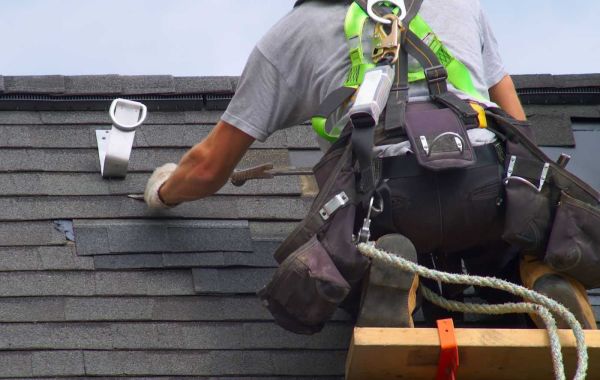Your roof is your home's first line of defense against the elements. However, weather conditions such as rain, sun, wind, and snow can take a toll on your roof over time. In this article, we'll discuss how different weather conditions affect your roof and when it's time to call in a professional roofing contractor.
The Impact of Weather on Your Roof
Rain: The Persistent Culprit
Rain is a common cause of roof damage. Consistent or heavy rain can wear down shingles, lead to leaks, and even cause roof rot if left unchecked. Water can seep into the smallest of cracks, leading to mold growth and structural damage over time. Regular inspections are crucial, especially after heavy rains, to identify missing or damaged shingles and any signs of leaks in your attic or interior ceilings.
What to Look For:
- Missing or damaged shingles
- Leaks in the attic or interior ceilings
- Damp spots or mold in the attic
Sun: The Silent Destroyer
The sun's ultraviolet (UV) rays can be incredibly damaging to your roof. Over time, these rays can dry out shingles, making them brittle and prone to cracking and curling. This deterioration can lead to roof failure if not addressed promptly.
Signs of Sun Damage:
- Faded or discolored shingles
- Brittle or cracked shingles
- Curled edges on shingles
Heat and Humidity: A Double-Edged Sword
Heat and humidity can cause shingles to buckle and warp. The excessive moisture can also lead to mold growth under the shingles, compromising the roof structure. High temperatures can exacerbate the effects of humidity, making the roof materials expand and contract, which further weakens the shingles.
Indicators of Heat and Humidity Damage:
- Warped or cracked shingles
- Mold growth in the attic
- Shingles that appear to be lifting or not lying flat
Snow: The Heavyweight
Heavy snowfall can put a significant strain on your roof. The weight of the snow can cause cracks and breaks in the roof structure, and the freeze-thaw cycle can cause shingles to loosen or lift. In areas with heavy snowfall, regular roof inspections are essential to prevent damage.
What to Watch For:
- Cracks or breaks in the roof structure
- Loose or lifted shingles
- Ice dams forming along the edges of the roof
Wind: The Forceful Factor
High winds can cause shingles to blow off and can also send debris flying, which can puncture the roof. After a major storm, it's crucial to inspect your roof for any signs of damage. High winds can also loosen the nails that secure the shingles, making them more susceptible to further damage.
Signs of Wind Damage:
- Missing shingles
- Punctures or tears in the roof material
- Shingles that appear lifted or loose
When to Call a Roofing Contractor
If you notice any of the following signs of roof damage, it's time to call a roofing contractor services:
Visible Signs of Damage
- Missing or Damaged Shingles: These are often the most obvious signs that your roof needs attention. Missing shingles can lead to leaks and further damage.
- Cracked or Warped Shingles: These indicate that the shingles have reached the end of their lifespan and need to be replaced.
Water Damage Indicators
- Leaks in Your Attic or Interior Ceilings: Water stains or damp spots in your attic or on your ceilings are clear signs that water is penetrating your roof.
- Mold Growth in Your Attic: Mold is a sign of persistent moisture and can lead to health problems and structural damage.
Structural Concerns
- Sagging or Buckling Roof: This can indicate severe structural damage and needs immediate attention.
- Granules Collecting in Your Gutters: This is a sign that your shingles are deteriorating and may need to be replaced.
Regular roof inspections and prompt repairs can help extend the life of your roof and save you money in the long run. A qualified roofing contractor can assess the damage to your roof and recommend the best course of action, whether it's a simple repair or a complete roof replacement.
Preventative Measures
To minimize weather-related roof damage, consider taking the following preventative measures:
- Regular Inspections: Schedule professional roof inspections at least twice a year, ideally in the spring and fall.
- Gutter Maintenance: Keep your gutters clean to prevent water from backing up and causing damage to your roof.
- Trim Overhanging Branches: This prevents branches from damaging your roof during storms and reduces the amount of debris that can accumulate on your roof.
Taking these steps can help protect your roof from the elements and ensure it remains in good condition for years to come. If you're unsure about the state of your roof or need professional advice, don't hesitate to contact a reputable roofing contractor.







